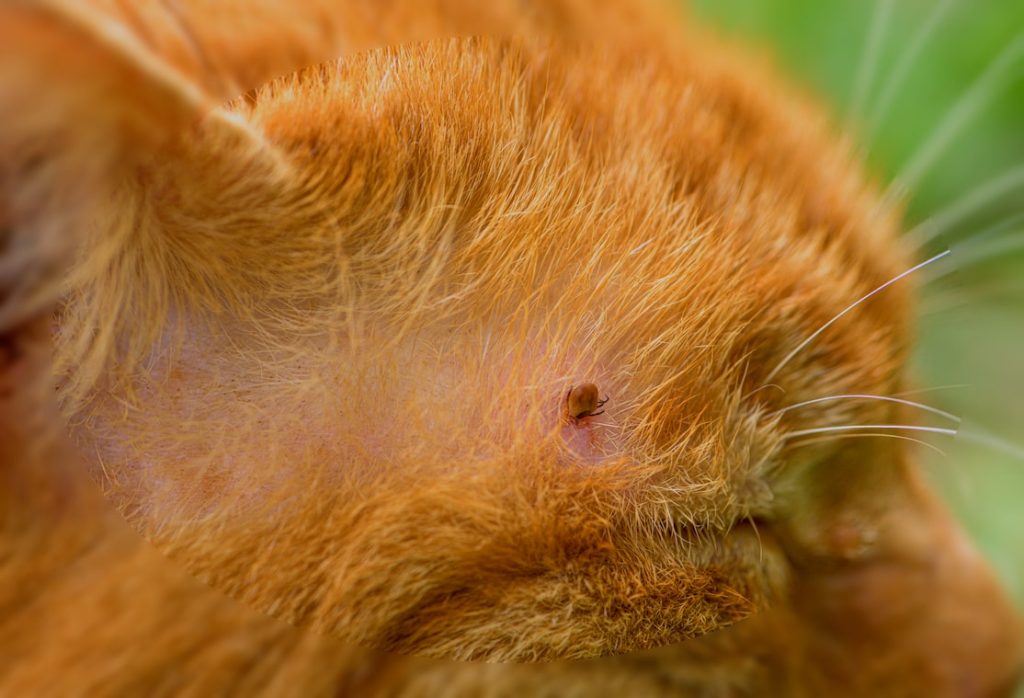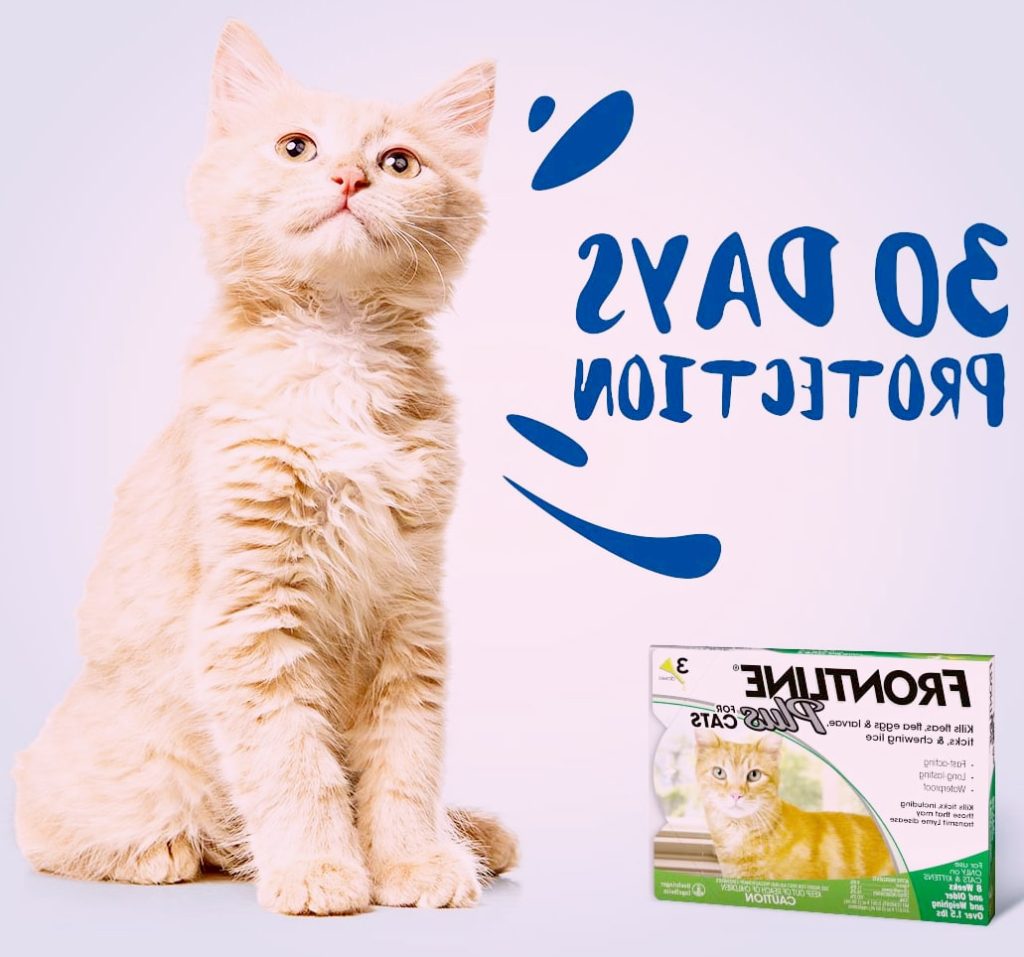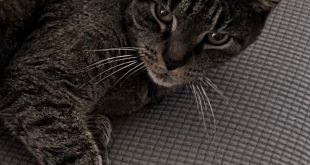What do cat fleas look like to the human eye? Fleas are tiny, blood-sucking parasites that can wreak havoc on both cats and humans. These pesky insects, known as cat fleas (Ctenocephalides felis), are a common nuisance in households with feline companions.

While their primary hosts are cats, they can also infest dogs and other animals, including humans. In this article, we delve into the fascinating world of cat fleas and explore what they look like to the human eye.
We also discuss below how do I know if I have cat fleas on me? Or Can human see cat fleas?
Section 1: Understanding Cat Fleas
1.1 Life Cycle and Habits
Cat fleas undergo complete metamorphosis, progressing through four distinct life stages: egg, larva, pupa, and adult.
Understanding their life cycle is crucial in combating infestations effectively. Fleas thrive in warm and humid environments and are highly resilient, capable of surviving for extended periods without a host.
1.2 Physical Characteristics
Cat fleas measure between 1 to 3 mm in length, making them barely visible to the naked eye. Their small size allows them to navigate through a host’s fur with ease, while their flattened bodies aid in quick movement.
Their reddish-brown coloration helps them blend with their surroundings, making detection even more challenging.
Section 2: Identifying Cat Fleas
2.1 Flea Bites on Humans
One of the primary indicators of a flea infestation is the appearance of itchy, red bumps on the skin. Flea bites are often clustered in groups or arranged in a line.
While they can occur anywhere on the body, fleas tend to target areas with thin skin, such as ankles, wrists, and the lower legs.
2.2 Observing Fleas
While cat fleas are difficult to spot due to their size, careful observation can reveal their presence.
If you suspect a flea infestation, a fine-toothed comb can be used to comb through your cat’s fur, especially around the neck and base of the tail.
Look for small, fast-moving dark specks, commonly referred to as “flea dirt,” which are actually flea feces.
2.3 Magnifying Tools
To get a closer look at cat fleas, magnifying tools such as a magnifying glass or a magnifying lens attached to a smartphone camera can be helpful.
These tools can enhance visibility and aid in distinguishing fleas from other common pests.
2.4 Identifying Physical Characteristics
Cat fleas have distinct physical features that set them apart from other insects. Their bodies are laterally compressed, allowing them to move effortlessly between the fur or feathers of their hosts.
They possess long hind legs, which facilitate their incredible jumping ability.
How do you know if you have cat fleas in your hair?
While cat fleas primarily infest cats and dogs, they can occasionally find their way into human hair. If you suspect you have cat fleas in your hair, here are some signs to watch out for:
Intense Itching: Flea bites can cause intense itching, and you may experience persistent scratching on your scalp. The bites often appear as small red bumps, similar to mosquito bites.
Visible Fleas or Flea Dirt: Check your hair and scalp carefully for the presence of fleas or flea dirt. Fleas are small, dark-colored insects that move quickly through the hair. Flea dirt, which is actually flea feces, looks like tiny black specks and may be more noticeable if you comb your hair onto a white surface.
Skin Irritation: Flea bites can lead to skin irritation, redness, and inflammation on the scalp. You might notice small, raised welts or a rash-like appearance.
Excessive Hair Shedding: In some cases, cat flea infestations can lead to hair loss due to constant scratching and irritation of the scalp. If you notice an unusual amount of hair shedding, it could be a sign of flea infestation.
Allergic Reactions: Some individuals may have an allergic reaction to flea bites, resulting in more severe symptoms such as swelling, hives, or even anaphylaxis in rare cases. If you experience any severe allergic reactions, seek immediate medical attention.
If you suspect you have cat fleas in your hair, it is crucial to take prompt action to eliminate them. Here are some steps you can take:
Thoroughly Wash and Comb Hair: Wash your hair with a shampoo specifically designed to kill fleas. While regular shampooing may not completely eliminate the infestation, it can help remove some fleas. After washing, comb your hair with a fine-toothed comb to remove any remaining fleas or flea dirt.
Treat Your Home: Since fleas can easily spread from pets to the environment, it is essential to treat your living space to prevent re-infestation. Vacuum carpets, upholstery, and bedding thoroughly and dispose of the vacuum bag immediately. Wash your bedding, linens, and clothing in hot water to kill any fleas or eggs.
Seek Medical Advice: If the infestation persists or if you experience severe symptoms, it is advisable to consult a healthcare professional. They can provide appropriate guidance and recommend suitable treatments to address the infestation and any related health concerns.
2.5 Flea Coloration
Although cat fleas appear reddish-brown at a glance, their color can vary depending on their feeding stage and the presence of blood in their digestive system. After feeding, fleas may appear darker, even black.
Section 3: Preventing and Treating Flea Infestations
3.1 Maintaining a Clean Environment
Regularly vacuuming carpets, upholstery, and pet bedding can help eliminate flea eggs, larvae, and pupae present in the environment.
Washing bedding and other washable items in hot water can also aid in flea control.
3.2 Pet Grooming and Prevention
Routine grooming, including brushing your cat’s fur and using a flea comb, can help remove adult fleas and flea dirt.
Regularly inspecting your pet’s skin for signs of flea bites or irritation is essential for early detection. Consult with your veterinarian about appropriate flea prevention products.
Can I spray my cat for fleas?
No, it is not recommended to spray your cat directly with products intended for treating fleas on surfaces or in the environment. Cats are highly sensitive to many substances, including certain chemicals found in flea sprays, which can be toxic to them if applied directly onto their fur or skin. Additionally, cats are known for their grooming behavior, and spraying them with a product not specifically formulated for cats can lead to ingestion of potentially harmful substances.

To effectively treat and prevent fleas on your cat, it is best to use flea control products that are specifically designed and labeled for use on cats. Here are some safe and effective options:
Flea Spot-on Treatments: These treatments come in small vials and are applied topically to a specific spot on your cat’s neck or back. They contain medication that targets fleas and disrupts their life cycle. Ensure that you choose a product labeled for use on cats, as those designed for dogs can be toxic to felines.
Flea Collars: Flea collars are designed to repel and kill fleas. They are worn around the cat’s neck and gradually release active ingredients that provide protection against fleas. Again, make sure to select a flea collar specifically formulated for cats.
Oral Medications: Some oral medications are available that can be prescribed by your veterinarian. These medications are administered orally and work by killing fleas when they bite your cat. They are effective in preventing and treating flea infestations.
It is important to consult your veterinarian before using any flea control products on your cat. They can recommend the most suitable option based on your cat’s health, age, and weight. Your veterinarian can also provide guidance on proper application and dosage.
Remember to follow the instructions on the product label carefully and avoid using multiple flea control products simultaneously unless specifically instructed by your veterinarian. Regular grooming, such as combing your cat with a flea comb, can also help remove adult fleas and flea dirt from their coat.
Maintaining a clean-living environment and regularly treating your cat for fleas is crucial in preventing and controlling infestations.
How do I kill cat fleas in my home?
To effectively kill cat fleas in your home, it’s important to address both the adult fleas and their eggs, larvae, and pupae. Here are steps you can take to eliminate cat fleas from your home:
Vacuum Thoroughly: Vacuum all carpets, rugs, upholstery, and any other areas where fleas might be present. Pay special attention to areas where your cat spends a lot of time.
Vacuuming helps remove adult fleas, eggs, larvae, and pupae. After vacuuming, immediately dispose of the vacuum bag or empty the canister into a sealed plastic bag and discard it outside your home.
Wash Bedding and Linens: Wash your pet’s bedding, your bedding, and any other washable items in hot water. High temperatures kill fleas at all stages of their life cycle. Dry the items on high heat as well.
Use Flea Sprays or Powders: Treat your home with a flea spray or powder specifically designed for indoor use. These products contain insecticides that target fleas and their life stages.
Follow the instructions on the product carefully, ensuring it is safe for use around pets and humans. Pay attention to areas where fleas are likely to hide, such as baseboards, cracks, and crevices.
Consider Flea Foggers/Bombs: If the infestation is severe, you may opt for flea foggers or bombs, which release a mist or fog containing insecticides to treat a larger area.
Before using these products, ensure that you read and follow the instructions precisely, as they typically require you to vacate the treated area for a certain period.
Treat Outdoor Areas: Fleas can also infest outdoor areas where your cat spends time. If your cat has access to a yard or outdoor space, consider treating those areas as well.
Use outdoor flea sprays or consult with pest control professionals for appropriate outdoor treatment options.
Consult a Professional: If the infestation persists despite your efforts, or if you prefer professional assistance, it may be beneficial to consult with a pest control professional.
They have expertise in dealing with flea infestations and can provide effective treatment options tailored to your specific situation.
Remember, prevention is key to avoiding future flea infestations. Implement regular flea control measures for your pets, such as using flea preventive products, keeping their bedding clean, and maintaining good hygiene practices.
Regular grooming and flea combing can also help detect and remove fleas before they become a widespread problem.
By combining thorough cleaning, targeted treatment, and preventive measures, you can effectively eliminate cat fleas from your home and create a flea-free environment for both you and your pets.


